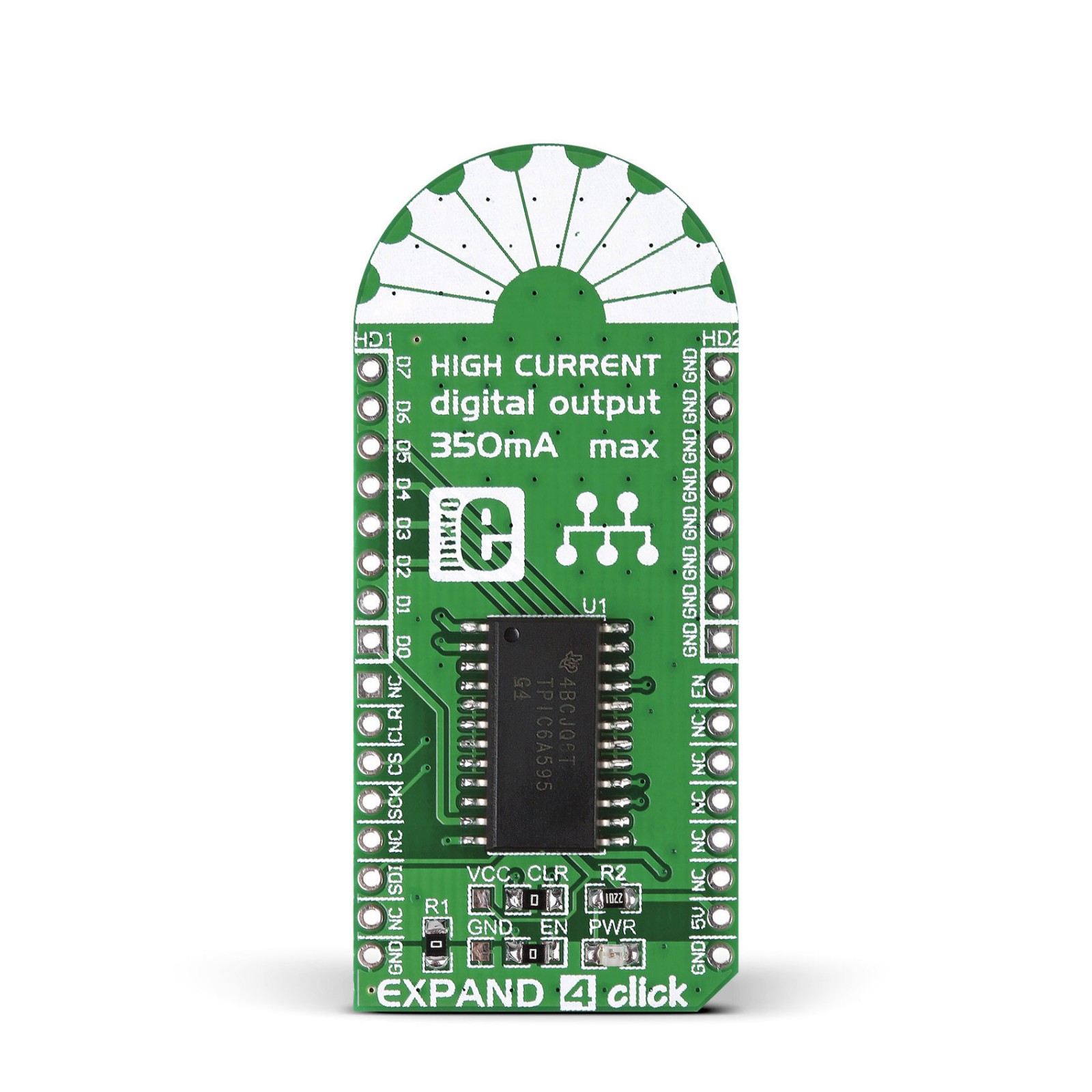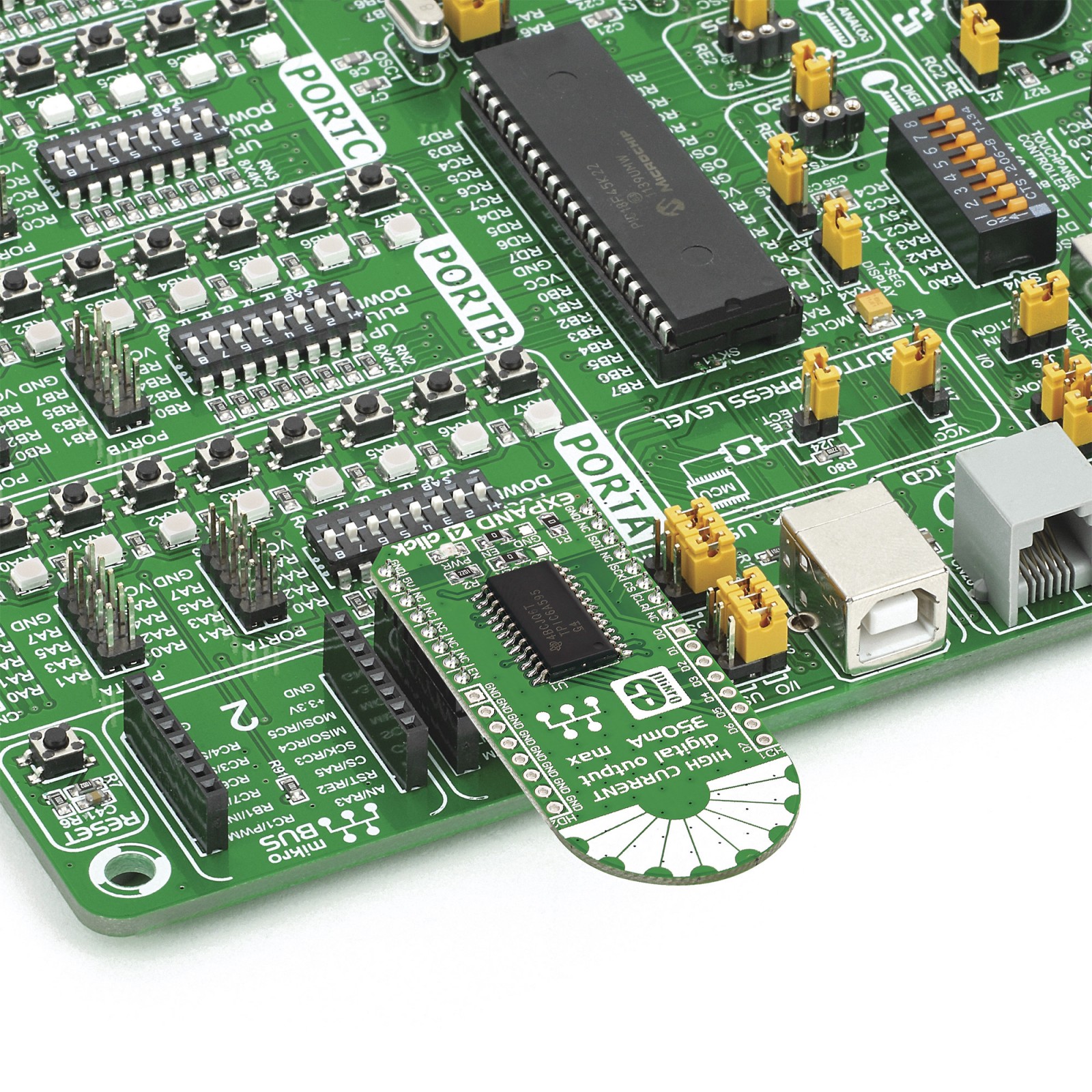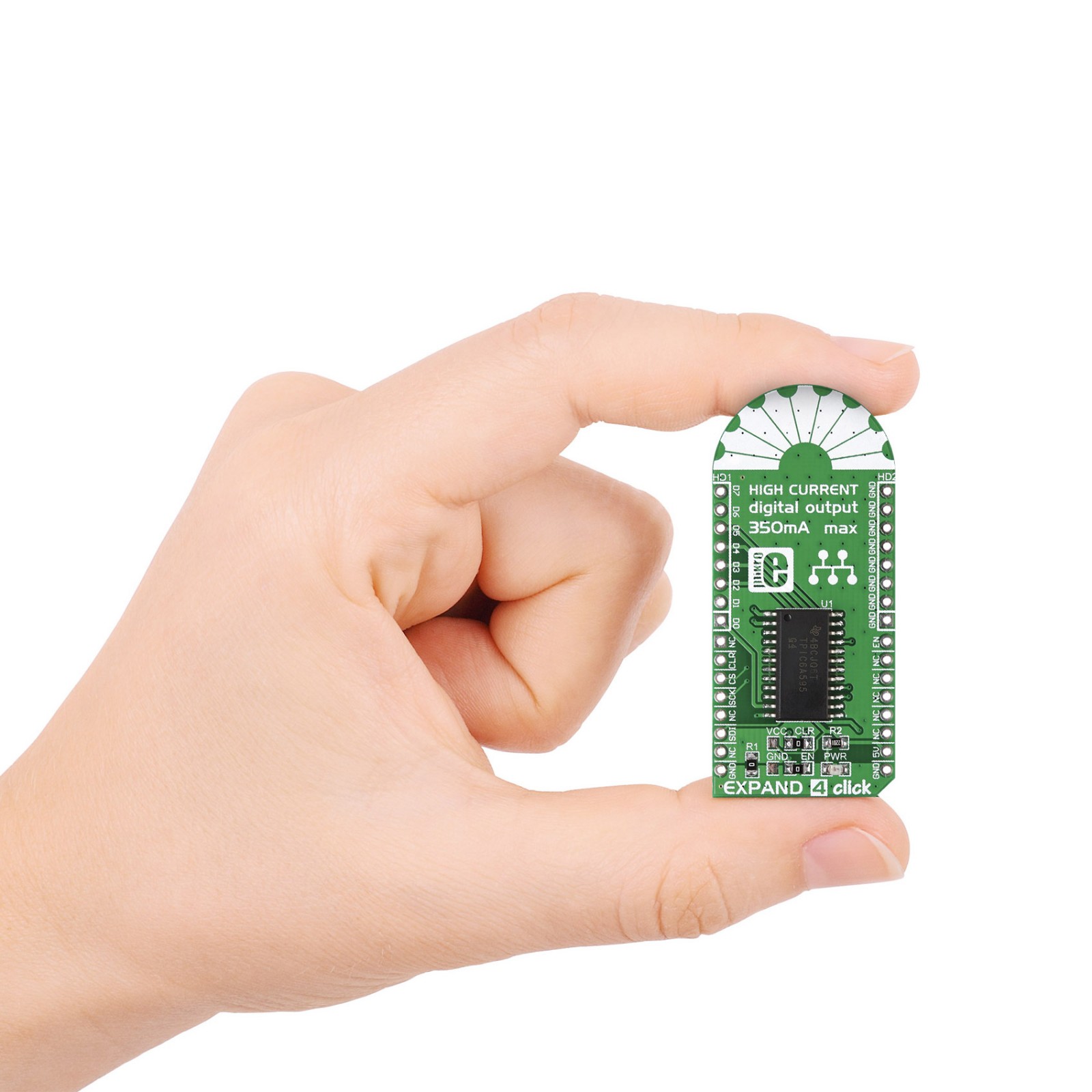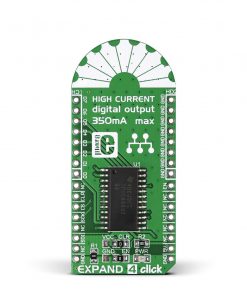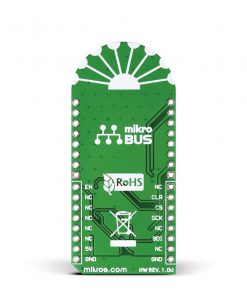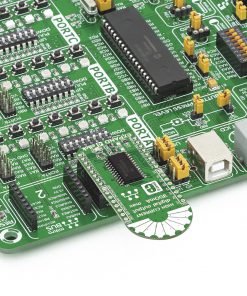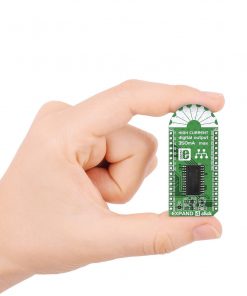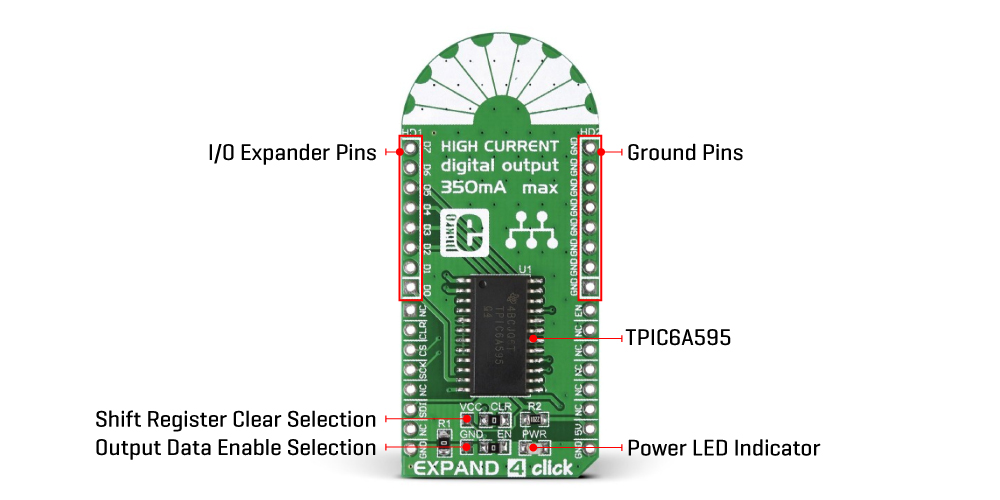EXPAND 4 Click
R315.00 ex. VAT
Expand 4 Click is a compact add-on board that contains a general-purpose input/output port expander. This board features the TPCIC6A595, an SPI-configurable 8-bit serial-in, parallel-out shift register with an 8-bit D-type storage register from Texas Instruments. The TPIC6A595 has a built-in voltage clamp on the outputs for inductive transient protection. On the output side, it has open-drain transistors with output ratings of 50V and 350mA, accessed through 8 pins above the mikroBUS™ socket (D0-D7) with corresponding ground (GND) pins on the other side. Besides, this board also incorporates an output enable feature, shift-register-clear, and impulse for shifting the data from the shift to the storage register. This Click board™ is intended as a port expander designed for use in systems that require relatively high load power.
Expand 4 Click is supported by a mikroSDK compliant library, which includes functions that simplify software development. This Click board™ comes as a fully tested product, ready to be used on a system equipped with the mikroBUS™ socket.
Stock: Lead-time applicable.
| 5+ | R299.25 |
| 10+ | R283.50 |
| 15+ | R267.75 |
| 20+ | R257.67 |

